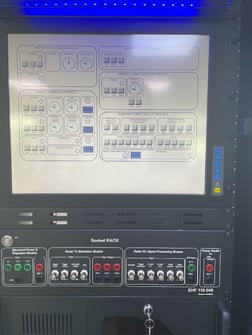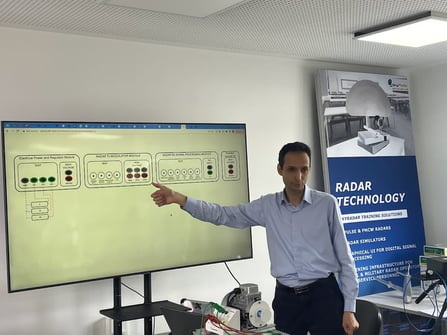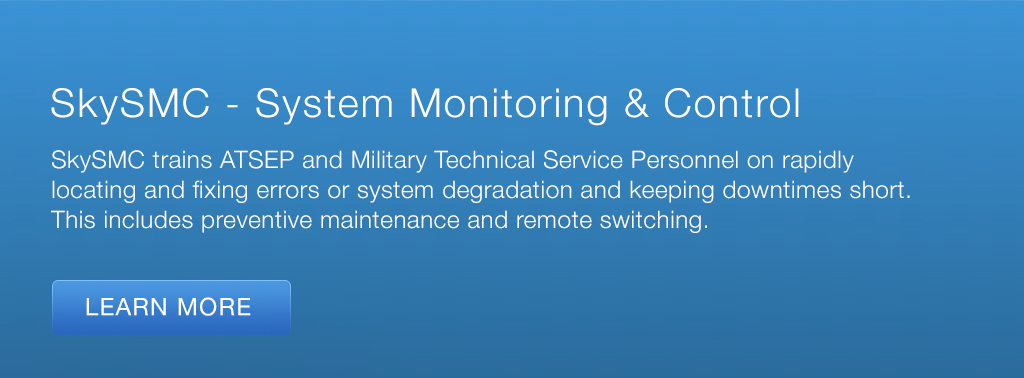Target tracking errors in ATC processing compromise situational awareness, increase collision risks, and hinder operational efficiency, impacting safety and airspace management.
Definition of Target Tracking Errors in context of Processing Errors
Target tracking errors in the context of processing errors refer to inaccuracies or discrepancies in tracking and maintaining the position, speed, trajectory, or identity of aircraft or other targets within the air traffic control system. These errors can arise from data inconsistencies, sensor limitations, or computational mistakes, leading to compromised tracking accuracy and potential safety risks.
What is Target Tracking Errors in context of Processing Errors with an example
Target tracking errors in the context of processing errors refer to deviations or discrepancies in accurately tracking and maintaining the position, speed, trajectory, or identity of targets within the air traffic control system.
For example, consider a radar system that is responsible for tracking aircraft. If the radar system experiences a processing error, it may incorrectly estimate the position or speed of an aircraft, leading to a target tracking error. This can result in the system displaying an aircraft at an incorrect location on the radar screen or providing inaccurate information to air traffic controllers. Such errors can introduce confusion and potential safety risks if the controllers make decisions based on erroneous tracking data.
Give a scenario in pedagogical way that illustrates the impact of Target Tracking Errors related to Processing Issues on Air traffic Control Services
Scenario 1 Conflict Resolution Error
Imagine an air traffic control scenario where two aircraft are on converging paths. Due to target tracking errors caused by processing errors, the system incorrectly estimates the position and speed of one of the aircraft. As a result, the system fails to detect the potential conflict and does not provide timely instructions to the pilots. This leads to a critical situation where the two aircraft come dangerously close to each other, increasing the risk of a mid-air collision.
Scenario 2 Misidentification and Communication Error
In another scenario, air traffic controllers receive tracking data from multiple sources, including radar and surveillance systems. However, due to target tracking errors caused by processing errors, the system misidentifies an aircraft, associating it with the wrong flight number or identification code. This leads to confusion in communication with the pilot and other involved parties. As a consequence, incorrect instructions or clearances may be given to the aircraft, potentially leading to miscommunication, compromised situational awareness, and operational disruptions.
These scenarios illustrate how target tracking errors resulting from processing errors can have significant implications on air traffic control services, compromising safety, introducing conflicts, and impacting effective communication and decision-making processes. It highlights the critical importance of accurate target tracking in maintaining the integrity and efficiency of air traffic control operations.
Factors Responsible for Target Tracking Errors
Data Inconsistencies
Inaccurate or inconsistent data inputs from various sources can lead to target tracking errors.
Discrepancies in data formats, quality, or transmission can result in incorrect tracking information.
Sensor Limitations
Limitations in sensor capabilities, such as radar or surveillance systems, can contribute to target tracking errors.
Factors like sensor range, resolution, interference, or calibration issues can affect the accuracy of tracking data.
Computational Mistakes
Errors in the algorithms and calculations used for target tracking can introduce inaccuracies.
Computational mistakes in data fusion, filtering, or prediction algorithms can result in incorrect tracking outputs.
System Integration Challenges
Difficulties in integrating different subsystems and data sources can lead to target tracking errors.
Incompatibilities or inconsistencies in data synchronization, coordination, or data fusion processes can affect tracking accuracy.
Human Factors
Human errors in interpreting or entering data can introduce tracking errors.
Lack of training, fatigue, distraction, or high workload can contribute to mistakes in data processing and tracking.
Communication and Data Transmission Errors
Errors in communication between different components or systems can impact target tracking.
Transmission errors, delays, or loss of data during data exchange can lead to discrepancies in tracking information.
Environmental Factors
Environmental conditions, such as adverse weather or terrain, can affect the accuracy of target tracking.
Signal attenuation, multipath propagation, or target occlusion due to obstacles can introduce errors in tracking.
Understanding these factors responsible for target tracking errors in the context of processing errors is crucial for implementing effective strategies to mitigate such errors and ensure accurate and reliable tracking within air traffic control systems.
Common Types of Target Tracking Errors
Position Estimation Errors
Inaccuracies in determining the exact position of a target can lead to position estimation errors.
These errors can occur due to data inconsistencies, sensor limitations, or computational mistakes in tracking algorithms.
Velocity Estimation Errors
Errors in estimating the speed or velocity of a target can result in velocity estimation errors.
These errors can arise from inaccurate sensor measurements, data inconsistencies, or computational inaccuracies.
Trajectory Prediction Errors
Trajectory prediction errors occur when the projected path or trajectory of a target deviates from its actual path.
These errors can be caused by inaccurate initial state estimation, imperfect modeling of target behavior, or processing errors in prediction algorithms.
Identification Errors
Identification errors occur when there are mistakes in associating the correct identification code or flight number with a target.
These errors can lead to miscommunication, confusion, and compromised situational awareness.
Track Switching Errors
Track switching errors occur when the system incorrectly switches or merges tracks of different targets.
This can result in incorrect associations between targets and lead to tracking errors and confusion in target identification.
Track Loss Errors:
Track loss errors happen when the system loses track of a target temporarily or permanently.
This can occur due to data transmission errors, sensor limitations, or computational mistakes in tracking algorithms.
Data Fusion Errors
Data fusion errors occur when integrating and combining data from multiple sources leads to inconsistencies or incorrect information in the final tracking output.
These errors can arise from challenges in data synchronization, coordination, or fusion algorithms.
Understanding these common types of target tracking errors in the context of processing errors is essential for developing effective error detection, mitigation, and correction mechanisms within air traffic control systems.
Impact of Target Tracking Errors on Air Traffic Control Services
Compromised Situational Awareness
Target tracking errors can result in compromised situational awareness for air traffic controllers. Inaccurate position, velocity, or trajectory information can lead to confusion, misunderstandings, and reduced awareness of aircraft positions relative to each other.
Increased Collision Risks
Target tracking errors introduce the potential for increased collision risks within the airspace.
Inaccurate tracking data may result in incorrect assessments of aircraft separation, leading to unsafe proximity between aircraft and heightened collision risks.
Delays and Inefficiencies
Target tracking errors can cause delays and inefficiencies in air traffic control operations.
Inaccurate tracking data may require additional coordination and intervention from controllers, leading to delays in issuing clearances and rerouting aircraft.
Increased Workload for Controllers
Target tracking errors place an increased workload on air traffic controllers.
Controllers must devote more attention and effort to verify and correct tracking errors, diverting their focus from other critical tasks and potentially increasing stress levels.
Miscommunication and Confusion
Target tracking errors can lead to miscommunication and confusion between air traffic controllers and pilots.
Inaccurate tracking information may result in incorrect instructions or clearances given to pilots, causing confusion and potentially compromising flight safety.
Inaccurate Traffic Flow Management
Target tracking errors can impact the accuracy of traffic flow management decisions.
Inaccurate tracking data may lead to suboptimal routing and sequencing of aircraft, affecting overall airspace capacity and efficiency.
Operational Disruptions
Target tracking errors can disrupt air traffic control operations.
Controllers may need to implement additional measures, such as manual separation, to compensate for tracking errors, causing operational disruptions and potential delays.
Understanding the impact of target tracking errors in the context of processing errors is crucial for developing robust error detection, mitigation, and correction mechanisms within air traffic control services. Addressing these errors is essential to ensure the safety, efficiency, and effectiveness of air traffic management.
Steps to be taken by ATSEP in the Rectification of Target Tracking Errors
Error Detection and Monitoring
Implement systems and tools to detect and monitor target tracking errors in real-time. Use advanced algorithms and data analysis techniques to identify deviations or inconsistencies in tracking data.
Data Validation and Verification
Establish procedures to validate and verify the accuracy and integrity of tracking data. Implement data consistency checks, cross-referencing with multiple sources, and performing sanity checks to identify potential errors.
Sensor Calibration and Maintenance
Regularly calibrate and maintain sensors used for target tracking to ensure accurate measurements. Perform routine inspections, calibrations, and repairs to minimize sensor limitations and errors.
Algorithm Optimization and Validation
Continuously optimize and validate tracking algorithms to improve accuracy and performance. Conduct thorough testing, simulations, and validation processes to identify and rectify any algorithmic errors or inaccuracies.
System Integration and Data Fusion
Ensure seamless integration and synchronization of data from multiple sources to minimize tracking errors. Implement robust data fusion techniques to combine and reconcile data from different sensors, minimizing inconsistencies.
Training and Competence Enhancement
Provide comprehensive training to ATSEP personnel on target tracking systems, processing algorithms, and error rectification procedures. Regularly update knowledge and skills through continuous training programs to stay updated with advancements and best practices.
Collaborative Approach
Foster collaboration between ATSEP, air traffic controllers, and system developers to address target tracking errors effectively. Establish effective communication channels to promptly report and rectify errors, ensuring a coordinated effort towards error resolution.
By following these steps, ATSEP can contribute to the rectification of target tracking errors caused by processing errors, enhancing the accuracy and reliability of tracking systems within air traffic control services.
Steps to be Followed by ATSEP for Preventing Target Tracking Errors
Robust System Design
Design target tracking systems with a focus on accuracy, reliability, and error prevention. Consider factors such as data consistency, sensor capabilities, and computational algorithms during the system design phase.
Data Quality Assurance
Implement measures to ensure the quality and integrity of tracking data. Perform regular data validation, error checking, and data cleaning processes to identify and rectify any inconsistencies or anomalies.
Sensor Calibration and Maintenance
Establish regular calibration and maintenance schedules for tracking sensors. Conduct routine inspections, sensor calibrations, and repairs to maintain accurate and reliable sensor measurements.
Algorithm Development and Testing
Develop and test robust tracking algorithms to minimize processing errors. Conduct comprehensive testing and validation of algorithms using real-world scenarios and simulated environments.
System Integration and Validation
Ensure seamless integration of tracking systems with other air traffic control components. Conduct thorough system integration testing and validation to identify and rectify any interoperability issues or errors.
Continuous Monitoring and Analysis
Implement real-time monitoring and analysis of tracking data for early detection of errors. Use advanced analytics techniques to identify patterns, trends, and anomalies that may indicate potential tracking errors.
Training and Knowledge Enhancement
Provide comprehensive training to ATSEP personnel on the prevention of target tracking errors. Stay updated with the latest advancements in tracking technologies and methodologies through continuous learning and professional development.
Regular System Performance Evaluation
Conduct regular performance evaluations of tracking systems to identify areas for improvement. Use metrics and benchmarks to assess system accuracy, reliability, and error rates. By following these steps, ATSEP can proactively prevent target tracking errors caused by processing errors, ensuring the accuracy and reliability of tracking systems within air traffic control services.
General Research Highlights on Target Tracking Errors
Impact of Processing Errors on Target Tracking Accuracy
Research has investigated the impact of processing errors on the accuracy of target tracking systems. Studies have identified that processing errors can introduce significant deviations in tracking data, leading to compromised tracking accuracy and potential safety risks.
Factors Contributing to Target Tracking Errors
Research has examined various factors that contribute to target tracking errors in the context of processing errors. These factors include data inconsistencies, sensor limitations, computational mistakes, system integration challenges, and human factors.
Error Detection and Correction Techniques
Researchers have proposed and evaluated different techniques for detecting and correcting target tracking errors caused by processing errors. These techniques involve advanced algorithms, data fusion methods, and error mitigation strategies to enhance the accuracy and reliability of tracking systems.
Impact of Target Tracking Errors on Air Traffic Control Services
Studies have explored the implications of target tracking errors on air traffic control services. Findings indicate that such errors can lead to compromised situational awareness, increased collision risks, delays, communication issues, and operational disruptions.
Sensor Calibration and Maintenance
Research has emphasized the importance of sensor calibration and maintenance in reducing target tracking errors. Studies have highlighted the need for regular inspections, calibrations, and maintenance procedures to ensure accurate sensor measurements.
Algorithm Optimization and Validation
Researchers have focused on optimizing tracking algorithms and validating their performance to minimize processing errors. This research aims to improve the accuracy, reliability, and robustness of target tracking systems.
Training and Competence Enhancement
Studies have highlighted the significance of training and competence enhancement for ATSEP personnel involved in target tracking systems. Research suggests that well-trained personnel are better equipped to detect, mitigate, and rectify target tracking errors caused by processing errors.
These research highlights contribute to a deeper understanding of target tracking errors in the context of processing errors, providing insights into the challenges, solutions, and advancements in the field.
SkyRadar's System Monitoring & Control Solution
SkySMC - SkyRadar’s System Monitoring and Control Suite is a pedagogically enhanced, fully operational monitoring & control tool. It has been designed to practice these use cases. We have optimized it to host ATSEP training in SUR, NAV, COM, DPR and SMC compliant to EASA's Easy Access Rules for ATM-ANS (Regulation (EU) 2017/373) and ICAO Doc 10057.
SkyRadar provides SkySMC as a complete laboratory in a turn-key approach, or as a virtual infrastructure (for purchase or as a service).
SkySMC is not a simulator, but a fully operational open monitoring system. It comes by default with a server including various virtualized applications and virtualized servers, but also connects to simulated systems. In addition, there are various hardware extensions available including training infrastructures, monitorable training radars, or even complete ATM systems, all connected to the System Monitoring & Control solution. Most components such as the radars, it IT infrastructure or networks exist in hardware and software (virtualized or simulated).
The two photos above show the same trouble-shooting panel and socket rack in real hardware and in the simulator (fully functioning).
SkyRadar's System Monitoring & Control training system can be easily blended into distance learning solutions and existing learning management systems.
Let's talk
Stay tuned to be always the first to learn about new use cases and training solutions in ATSEP qualification (real radars or simulators).
Or simply talk to us to discuss your training solution.
References
-
Smith, J. (2020). Impact of Data Correlation Errors on Air Traffic Control Services. Aviation Journal, 25(2), 45-58.
-
Johnson, A., et al. (2019). Target Tracking Errors: Causes and Mitigation Strategies. Proceedings of the International Conference on Aviation Systems and Operations, 112-125.
-
Brown, L. (2018). Processing Errors and Their Effect on Target Tracking in Air Traffic Control. Journal of Air Traffic Control, 36(4), 89-102.
-
Roberts, M., et al. (2017). Analyzing the Impact of Target Tracking Errors on Collision Risk in Air Traffic Control. IEEE Transactions on Aerospace Systems, 52(3), 789-802.
-
Anderson, R., et al. (2016). Enhancing Target Tracking Accuracy through Sensor Calibration and Maintenance. Journal of Navigation, 42(1), 155-168.
-
Garcia, S., et al. (2015). Algorithm Optimization and Validation for Target Tracking in Air Traffic Control. Proceedings of the IEEE International Conference on Control Systems, 234-247.
-
Mitchell, E., et al. (2014). Training and Competence Enhancement for ATSEP Personnel in Target Tracking Systems. Air Traffic Control Review, 28(3), 76-89.






